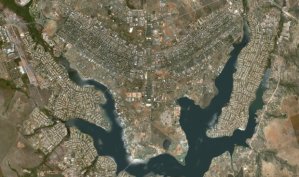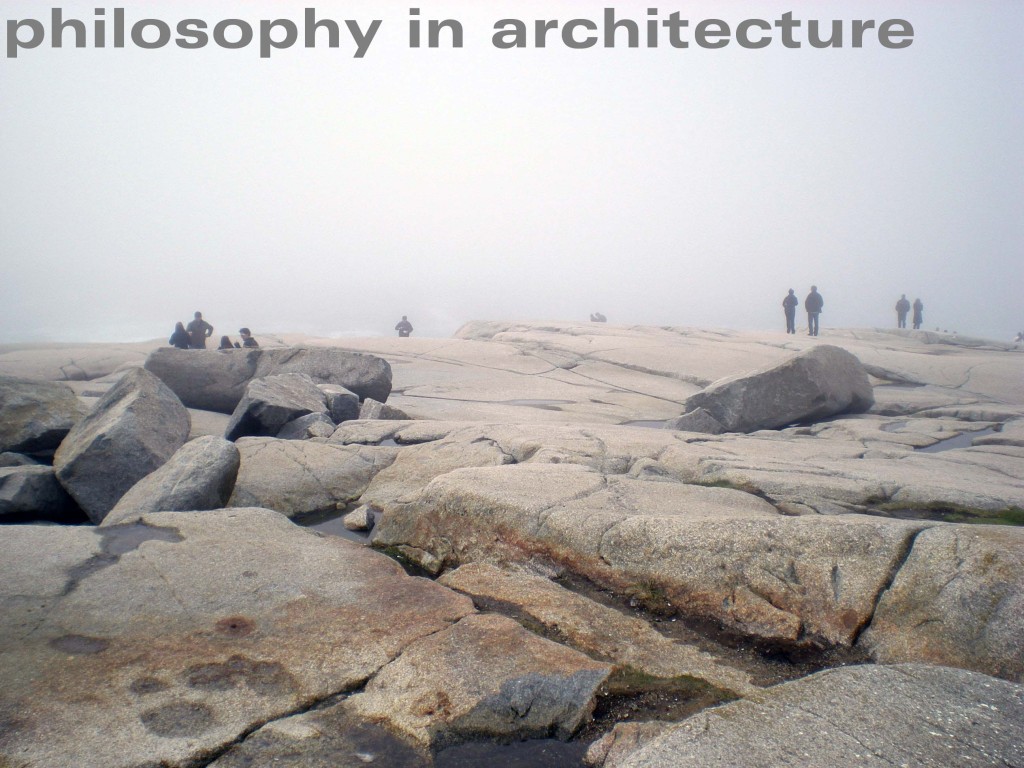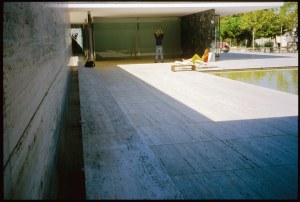Land, City, Architecture Master of Architecture M1 Studio Arch 692 02 2010
This introductory Master of Architecture M1 studio takes the subject of location as a significant aspect of the process of architectural design. In the initial phase of the studio, we will look at recent discussions in the field of urbanism and landscape, centering on the notion of creative cities or cities of knowledge and culture – Montréal has been designated a design city by UNESCO. This could be taken to be analogous to the
process of defining a site and programme in a traditional architecture studio. Students will be able to introduce their individual selections of site and programme into this context. A translation of Christian Devillers’ lecture entitled The Urban Project, is available as a key course reading. Students may choose to direct a seminar about the influence of the reading on the thesis topic.
 Cities, Towns and Neighborhoods Urban issues influence all aspects of contemporary art, including the graphic novel. Cartoonists’ refined drawings not only depict contemporary cities, they have the advantage of portraying the thoughts of characters as they experience daily urban life- even to the self-reflexive invention of a comic strip out of a regular, repetitive urban walk. The Montréal-based publisher of graphic novels, Drawn & Quarterly, has issued a remarkable series of cartoon publications that document the architecture and urban form of traditional city centers and towns. Cartoonists such as Julie Doucet and Michel Rabagliato catalog the streetscapes, stores and apartments of central Montréal as backgrounds to their narratives. Unpretentious hybrid urban neighborhoods in Ontario were fondly documented in the graphic novels of the cartoonist Seth, (the pen name of Gregory Gallant). Specific places in central Toronto are recognizable, for example, in his curiously titled graphic novel, It’s a Good Life, If You Don’t Weaken. His own home office is the subject of a comic strip, and he illustrated the regular walks that fuel his imagination. Seth’s imagery of a town leads into the topic of the analysis of existing urban form – of a neighbourhood, of a town – that captures the imagination, in a time when cities should be destined to revert to liveable, walkable, sustainable places. The most efficient form of recyling, the reusing of existing urban form, happens according to self-organizing principles in a manner described with economic detail in Jane Jacobs’ texts such as The Death and Life of American Cities and The Nature of Economies. Ideally the principles will be simple: for example, Jacobs favors the porous, small-sized block. In this vein, are there not guidelines to workable cities embedded in city and town centres? How can designers use the existing, continuously reused patterns blocks, sidewalks, streets, alleys and built form of traditional towns and city neighborhoods as the dictionaries of urban form that provide methods for contemporary urban design?
Cities, Towns and Neighborhoods Urban issues influence all aspects of contemporary art, including the graphic novel. Cartoonists’ refined drawings not only depict contemporary cities, they have the advantage of portraying the thoughts of characters as they experience daily urban life- even to the self-reflexive invention of a comic strip out of a regular, repetitive urban walk. The Montréal-based publisher of graphic novels, Drawn & Quarterly, has issued a remarkable series of cartoon publications that document the architecture and urban form of traditional city centers and towns. Cartoonists such as Julie Doucet and Michel Rabagliato catalog the streetscapes, stores and apartments of central Montréal as backgrounds to their narratives. Unpretentious hybrid urban neighborhoods in Ontario were fondly documented in the graphic novels of the cartoonist Seth, (the pen name of Gregory Gallant). Specific places in central Toronto are recognizable, for example, in his curiously titled graphic novel, It’s a Good Life, If You Don’t Weaken. His own home office is the subject of a comic strip, and he illustrated the regular walks that fuel his imagination. Seth’s imagery of a town leads into the topic of the analysis of existing urban form – of a neighbourhood, of a town – that captures the imagination, in a time when cities should be destined to revert to liveable, walkable, sustainable places. The most efficient form of recyling, the reusing of existing urban form, happens according to self-organizing principles in a manner described with economic detail in Jane Jacobs’ texts such as The Death and Life of American Cities and The Nature of Economies. Ideally the principles will be simple: for example, Jacobs favors the porous, small-sized block. In this vein, are there not guidelines to workable cities embedded in city and town centres? How can designers use the existing, continuously reused patterns blocks, sidewalks, streets, alleys and built form of traditional towns and city neighborhoods as the dictionaries of urban form that provide methods for contemporary urban design?
One source is the urban form of what is known as the student ghetto, McGill Ghetto in Montréal or ‘Milton Parc’ (as it is known in French). Others are drawn from main street architecture on small-scale urban retail axes in Central Toronto, Bloor Street West and Queen Street West. Urbanist Kees Christiaanse claims similarities between Toronto’s Queens Street West and Greenwich Village. These districts provide methods for combining disparate building types, amalgamated in contemporary urban form that blends programs, integrating dwelling, leisure, commerce, daily working and night life. In an exercise parallel to Seth’s abstraction of the town of Guelph, depicting with humor the narrative of the graphic novel of Dominion City, so in an abstracting process, the material components of a successful neighborhood depicted with urban drawing, documentation and photography, contribute to the maintenance of existing and formulation of new urban quarters. Analysis of a series of examples of unassuming, middle density, mixed use building types and their urban contexts will set out some basic urban qualities, adding to the formulation of useful, effective, applicable town design principles.
Potential Reactivations and Insertions Despite intense new construction in city centers in the last few years, numerous urban vacant lots persist. The phenomenon of empty lots, blocks, and precincts that remain unbuilt constitute a puzzle of contemporary urban development: why surface parking lots stay that way, when the possibilities for building are obvious. Another mystery of urban inefficiency is the long-term vacancy of scattered, intact but deteriorating existing buildings. Mapping of un-built, under-occupied areas that could easily accommodate new construction or renovation pinpoints the potential for intensification, prompting consideration of the range of heights that would be appropriate. The question of how tall should a densely built fabric can sustain is one that deserves additional study. Some of the nineteenth-century insertions reach twelve storeys without intruding on the character of the neighborhood. Even the thirty-storey stepped tower ensemble of La Cité is reasonably well integrated. The most successfully integrated towers are tall point towers with small building footprints such as La Colisée lining Sherbrooke Street. Typically this kind of taller tower is located at the peripheries of the neighborhood. Dwellings that are in the four to eight storey range have a major advantage if the residents are willing to make regular use of the staircases. In considering the principle of urban substitution proposed by urbanist Christian Devillers, that consists of judicious accumulating, replacing and adding to the urban block in a regular manner, and considering the importance of maintaining the character of small lot divisions, and the average height of surrounding building, a working hypothesis is that new construction of smaller scale, and of less that ten-storey height might be preferable in an era of energy scarcity.
The objective of the studio is to produce several significant components contributing to the overall course of thesis study, that is, for example, a draft document, abstract, outline, data bank of images, base drawings, maps, etc., and a preliminary design of a built form that indicates the design approach and direction that would be taken in the later development of the thesis. Student may use competitions due in mid-July as a springboard for design development.
The studio will use online material posted on UW Ace site, such as articles and excerpts. An important reference is an unpublished translation of an influential text by architect and urbanist, Christian Devillers: The Urban Project, available from files. Additional bibliographic elements include the transcript of a lecture by Kees Christiaanse, ‘Limited Access or the open city?’, a London School of Economics Lecture.
Significant reference material can be found in exhibition web archive of the Canadian Centre for Architecture, in particular the summer 2008 series, ‘Some Ideas on Living in London and Tokyo, Stephen Taylor and Ryue Nishizawa’.
Summer 2010 Competition sites are updated: see http://bustler.net or http://www.thearchitectureroom.com for current competitions: examples include the 2009 ‘Urban SOS’ competition sponsored by EDAW; previously, the Ecohouse Student Design Competition 2008: design an ecohouse (floor area 120 sq metres approx) for up to six persons on chosen site. http://www.concretecentre.com/main.asp?page=1740
Nitori One-House Total Coordination Competition 2008http://www.nitori.co.jp/english/contest2008/
Central Glass Competition 2008 http://www.cgco.co.jp/english, due mid July
LEAP social housing competition Université de Montréal, http://www.leap.umontreal.ca/
Shinkenchiku Design Competition, http://www.japan-architect.co.jp/english/5info/index.html
Mid Term and End of Term
Over the course of the term, students will initiate and develop the following:
Thesis abstract, Thesis outline, Site Documentation, List of Drawings, Bibliography, Web Site References; as well as a preliminary design project which may be primarily related to the design competition and should also relate to the design topic selected for the Thesis.
Evaluation: Students will be evaluated based upon the following criteria: Effective planning and follow-through of Thesis Outline, Quality of conception, Quality of execution, Thoroughness of development, Completeness of work, Innovation, consistency and coherence of design ideas, Quality of graphic and verbal presentation, Participation.
University of Waterloo web site contains rules and regulations that pertain to this course outline. See: http://www.grad.uwaterloo.ca/ Grievance Policy: http://www.adm.uwaterloo.ca/infosec/Policies/policy70.pdf
Discipline Policy: http://www.adm.uwaterloo.ca/infosec/Policies/policy71.pdf
Brief Course (2009) description posted: http://www.architecture.uwaterloo.ca
 General references
General references
CCA http://www.cca.qc.ca/ McGill Architecture http://www.mcgill.ca/architecture/links/
Bibliography
Pierre Bourdieu, La Distinction: critique sociale du jugement Paris: Éditions de Minuit, 1979
Françoise Choay, ‘De la démolition’, in Les Métamorphoses parisiennes Paris: Mardega 1996
James Corner, ‘Not Unlike Life Itself – Landscape Strategy Now’, Harvard Design magazine no.21 Fall 2004 winter 2005, http://www.gsd.harvard.edu/research/publications/hdm/current/index.html
Guy Debord, The Society of the Spectacle, Chapter 7 “The Organization of Territory, Guy-Ernest Debord at http://library.nothingness.org/articles/SI/en/display/24
The complete text series at http://library.nothingness.org/articles/SI/all/index.php3
Christian Devillers, Le Projet Urbain, Paris: Pavillon de l’Arsenal 1994
Drawn and Quarterly, http://www.drawnandquarterly.com
Gustavo Giovannoni, L’urbanisme face aux villes anciennes Paris: Éditions du Seuil 1998
Jane Jacobs, The Death and Life of American Cities, New York: Random House 1961
The Nature of Economies, Toronto: Random House 2000 on self-organizing: p 177
Alberto Magnaghi, The Urban Village, a charter for democracy and local self-sustainable development, London: Zed Books 2005
Jean-Claude Marchand, Montréal in Evolution Kingston: McGill-Queen’s University Press, c1981
Seth [Gregory Gallant] It’s a Good Life, If You Don’t Weaken, Montréal: Drawn & Quarterly 2001
Graham Shane, ‘The Emergence of Landscape Urbanism, Reflections on Stalking Detroit’, Harvard Design Magazine no. 19, Fall 2003/Winter 2004
Transmaterial Research http://archinect.com/features/article.php?id=10348_0_23_0_M
Blaine Brownell’s product of the week electronic journal developed at nbbj.www.transstudio.com
Edward Tufte http://www.edwardtufte.com/tufte/ books: Visual Display of Quantitative Information, Envisioning Information, Visual Explanations etc.
Available is an excerpted, in progress translation of ‘How to write a Thesis’, Umberto Eco, Come si fa una tesi di Laurea (excerpts) Milan: Tascabili Bompiani 1977.















